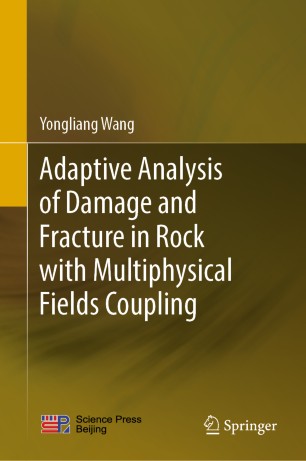

Most ebook files are in PDF format, so you can easily read them using various software such as Foxit Reader or directly on the Google Chrome browser.
Some ebook files are released by publishers in other formats such as .awz, .mobi, .epub, .fb2, etc. You may need to install specific software to read these formats on mobile/PC, such as Calibre.
Please read the tutorial at this link: https://ebookbell.com/faq
We offer FREE conversion to the popular formats you request; however, this may take some time. Therefore, right after payment, please email us, and we will try to provide the service as quickly as possible.
For some exceptional file formats or broken links (if any), please refrain from opening any disputes. Instead, email us first, and we will try to assist within a maximum of 6 hours.
EbookBell Team

4.7
86 reviewsThis book mainly focuses on the adaptive analysis of damage and fracture in rock, taking into account multiphysical fields coupling (thermal, hydro, mechanical, and chemical fields). This type of coupling is a crucial aspect in practical engineering for e.g. coal mining, oil and gas exploration, and civil engineering. However, understanding the influencing mechanisms and preventing the disasters resulting from damage and fracture evolution in rocks require high-precision and reliable solutions.
This book proposes adaptive numerical algorithms and simulation analysis methods that offer significant advantages in terms of accuracy and reliability. It helps readers understand these innovative methods quickly and easily. The content consists of: (1) a finite element algorithm for modeling the continuum damage evolution in rocks, (2) adaptive finite element analysis for continuum damage evolution and determining the wellbore stability of transversely isotropic rock, (3) an adaptive finite element algorithm for damage detection in non-uniform Euler–Bernoulli beams with multiple cracks, using natural frequencies, (4) adaptive finite element–discrete element analysis for determining multistage hydrofracturing in naturally fractured reservoirs, (5) adaptive finite element–discrete element analysis for multistage supercritical CO2 fracturing and microseismic modeling, and (6) an adaptive finite element–discrete element–finite volume algorithm for 3D multiscale propagation of hydraulic fracture networks, taking into account hydro-mechanical coupling. Given its scope, the book offers a valuable reference guide for researchers, postgraduates and undergraduates majoring in engineering mechanics, mining engineering, geotechnical engineering, and geological engineering.